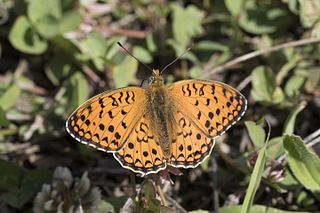
The Niobe fritillary is a species of butterfly in the family Nymphalidae.
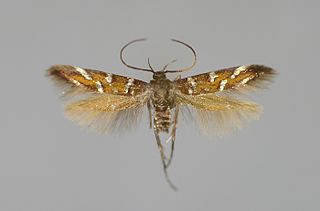
Pancalia is a genus of moths in the family Cosmopterigidae.

Cosmopterix lienigiella is a moth of the family Cosmopterigidae. It is found from Fennoscandia to Spain, the Alps and Greece and from Ireland to Ukraine. It is also present in eastern Russia and Japan. It is the type species of the genus Cosmopterix.

The shy cosmet moth is a moth of the family Cosmopterigidae. It is known from all of Europe, as well as Asia, Australia and New Zealand. It is also present in North America, where it is distributed from Nova Scotia to Virginia, west to Oklahoma and north to Ontario. The habitat consists of fens and marshes.
Pancalia baldizzonella is a moth in the family Cosmopterigidae. It is found in Italy.

Pancalia leuwenhoekella is a moth in the family Cosmopterigidae.
Pancalia nodosella is a moth in the family Cosmopterigidae. It is found in Portugal, Spain, France, the Netherlands, Germany, Austria, Italy, Slovenia, Slovakia, most of the Balkan Peninsula, Ukraine, Latvia and Russia. In the east, the range extends through the Caucasus and Central Asia to Kyrgyzstan.
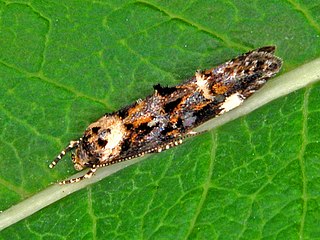
Mompha conturbatella, also known as the fireweed mompha moth, is a moth in the family Momphidae found in Asia, Europe and North America. It was first described by Jacob Hübner in 1819.
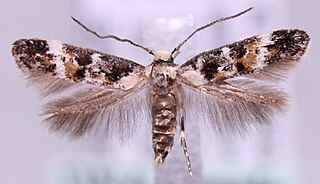
Mompha lacteella is a moth in the family Momphidae found in the Palearctic including Europe.

Mompha propinquella is a moth in the family Momphidae found in Europe.
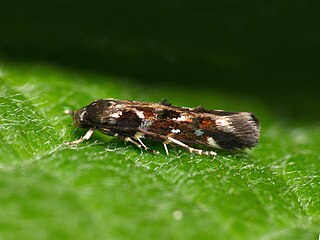
Mompha terminella is a moth in the family Momphidae found in Europe and North America.
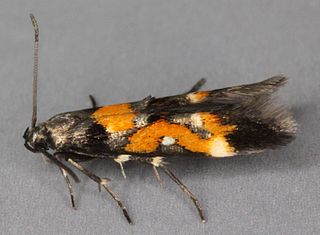
Mompha locupletella is a moth in the family Momphidae that can be found in the Palearctic including Europe.

The Antequerinae are a subfamily of the Cosmopterigidae. In the Nearctic, the subfamily consists of eight species in four genera, found in North America and England.
Pancalia amurella is a moth in the family Cosmopterigidae. It was described by Reinhard Gaedike in 1967. It is found in the Russian Far East and China.
Pancalia aureatus is a moth in the family Cosmopterigidae. It was described by C.K. Yang in 1977. It is found in Beijing, China.
Pancalia sichotella is a moth in the family Cosmopterigidae. It was described by Hugo Theodor Christoph in 1882. It is found in the Russian Far East.
Pancalia sinense is a moth in the family Cosmopterigidae. It was described by Reinhard Gaedike in 1967. It is found in China.
Pancalia wuyiensis is a moth in the family Cosmopterigidae. It was described by Z.W. Zhang and H.H. Li in 2009. It is found in China (Fujian).
Pancalia gaedikei is a moth in the family Cosmopterigidae. It is found in Khabarovsk Krai, Russia.
Pancalia isshikii is a moth in the family Cosmopterigidae. It is found on the islands of Hokkaido and Honshu of Japan and Russia.










